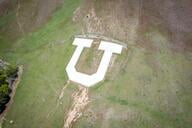You have /5 articles left.
Sign up for a free account or log in.

Getty Images
WASHINGTON -- Harvey Mudd College has a problem. Over time it’s developed a “more is more” culture around faculty work that isn’t, well, working.
Lisa Sullivan, dean of the faculty, wants that to change, she said Thursday at the annual meeting of the Association of American Colleges and Universities.
“There’s a strong connection between excellence, rigor and pain,” Sullivan said during a session on data-driven strategies for reducing faculty workload. “You know you’ve got it right if you’re suffering a little bit and stressed. If you’re not at that point, then you’re probably not working hard enough.”
Harvey Mudd's professors -- most of whom have science Ph.D.s and active research agendas -- therefore feel they must be “triathletes,” excelling in teaching, research and service at all times, rather than excelling “serially” in different areas throughout their careers, Sullivan added. And their dissatisfaction is reflected in the numbers: 15 percent of tenure-track and tenured professors and 20 percent pretenure professors in particular say “unrelenting pressure to perform” is a major challenge, according to data gathered by the Collaborative on Academic Careers in Higher Education (COACHE). Some 25 percent of Harvey Mudd professors cite teaching load as a barrier to satisfaction, with associate professors feeling the pinch there, especially.
Faculty workload woes aren’t unique to Harvey Mudd, of course, which is why COACHE sponsored the session. (Professors may be surprised -- and happy -- to know that the administrator-heavy crowd was standing-room only.) According to the collaborative’s national data on liberal arts colleges, 52 percent of associate professors say they are unable to balance the teaching, research and service activities expected of them, let alone balance work with other aspects of their lives. And liberal arts institution faculty members are categorically more satisfied with their work than are research university professors.
Like Sullivan, many administrators understand that asking faculty members to do too much, either explicitly or by way of culture, can backfire. But backing off too much, too soon, can also backfire, lest courses go untaught, committees go without leaders, students go unmentored and so on.
COACHE’s goal for the session, then, was to offer examples of how institutions are -- in the words of Executive Director Kiernan Mathews -- thoughtfully “bucking the trend to pile on more and more” and making space for faculty members to “advance not more work but their best work.”
Examples of Success
Farther into that process than Harvey Mudd is Skidmore College, which sought to address faculty workload concerns after 2014 COACHE data revealed that early-career faculty members at the college were generally less satisfied with their work than were their senior colleagues and their counterparts at peer institutions. Follow-up research -- led by a Skidmore professor who studies faculty work -- revealed a dissatisfaction with workload and a sense that professors on campus don’t “root for each other.”
“That means we sort of have a mentality or philosophy that everybody’s got to run the gauntlet in the tenure process,” said panelist Beau Breslin, dean of the faculty and vice president of academic affairs at Skidmore. “That it has to be hard, rigorous work to justify the quality of the work that we do, and we don’t always root for each other as the process goes on.”
Seeking to alleviate some of that pressure, Breslin said, Skidmore undertook a series of small, targeted changes, rather than a major overhaul that could have created more work for faculty members. The college lengthened the period between posttenure review letters, altered the faculty handbook language to reward service, adopted on-off cycles for service on core committees, created associate chair positions to help share department chairs’ duties and compensated faculty members for supervising students in “directed-study experiences,” such as independent studies or collaborative research.
Breslin focused his comments on a relatively minor change that’s made a big difference: consensus letters for third-year reappointments of faculty members on the tenure track. Previously, Skidmore was a relative outlier among peer institutions in formally evaluating assistant professors three times: once in the second and third year, and again for tenure. All three points required formal input from all faculty members in a department, and because Skidmore has hired 100 new faculty members in six years, the work was onerous and repetitive.
Now, only department chairs write a review letter upon the third-year reappointment, which colleagues simply sign. They can still write letters of dissent, however.
Breslin said the experience taught him that the dean’s office can effect meaningful change in this area, and that having an in-house faculty work specialist (who was compensated for her efforts) proved especially helpful.
Unlike Skidmore, Scripps College did take a comprehensive approach to adjusting workload, reducing a five-course annual teaching requirement to four courses. Panelist Amy Marcus-Newhall, dean of faculty and vice president of academic affairs at Scripps, said COACHE data revealed faculty dissatisfaction with the college’s five-course load, as the institution has a required senior thesis -- the supervision and reading of which made faculty members feel like they were teaching six courses per year. Additional evidence suggested that the college was losing professors, both current and first-pick candidates in faculty searches, to similar institutions with smaller standard teaching loads, she said.
The college received funds from the Andrew W. Mellon Foundation to form a Teaching Load Advisory Committee to gather data and explore alternative models for reducing teaching load. An early suggestion of crediting professors for reading theses died on arrival, so the committee worked to develop a plan for teaching one less course that maintained the integrity of curriculum, Marcus-Newhall said. Members had to think about class size, number of courses offered, impact on the core curriculum, reliance on non-tenure-track faculty and the impact on the Claremont Colleges consortium. The college also asked departments to calculate the effect a teaching load reduction would have on their programs in two different, formal reports.
Road Ahead
Scripps is phasing in the change, with half the faculty teaching the “2-2” course load for a year, and the other half of the faculty doing so next.
Course releases have been all but eliminated but the reduction still necessitates the hiring of four new tenure-track positions across the college. Scripps is paying for the change primarily through a faculty retirement program. It's also establishing a fund with cash reserves to ensure its future viability. Marcus-Newhall and the Faculty Executive Committee led the process, she said, but it was approved by the entire faculty via vote. Constant updates on progress to the Board of Trustees were key to its buy-in, she said, advising other institutions to make their cases for change with data.
“Our rationale was academic excellence -- we wanted faculty to be able to focus on teaching, scholarship and service,” Marcus-Newhall said.
Mathews, of COACHE, said he's learned that language matters. In particular, he said, faculty "workload" isn't always the best term to use in discussions about reducing it, as it may not garner sympathy from some audiences. Reframing the discussion might be helpful, he said.
Harvey Mudd is at the beginning of its road, since early interventions -- what Sullivan called "piecemeal, voluntary, under-resourced" changes -- didn't work. A faculty study of work-life balance led to increased research funds, which led to increased expectations, she said. Similarly, increased leadership opportunities for faculty members to help compensate them for their work led to more course releases but also more work for their colleagues. But there is more reason than ever to proceed: students, too, report being overstressed, and even professors believe that students take too many classes, according to COACHE data. Indeed, campus discussions about pressures on students -- including those surrounding diversity and inclusion -- prompted the cancellation of classes for two days last year. More than anything, Sullivan said she hopes to be able to report in few years that the campus culture of "more is more" has evolved to something more sustainable.
"Faculty and student workload pressures are inextricable," she said. "Faculty and students are united in their hopes for whole personhood."





